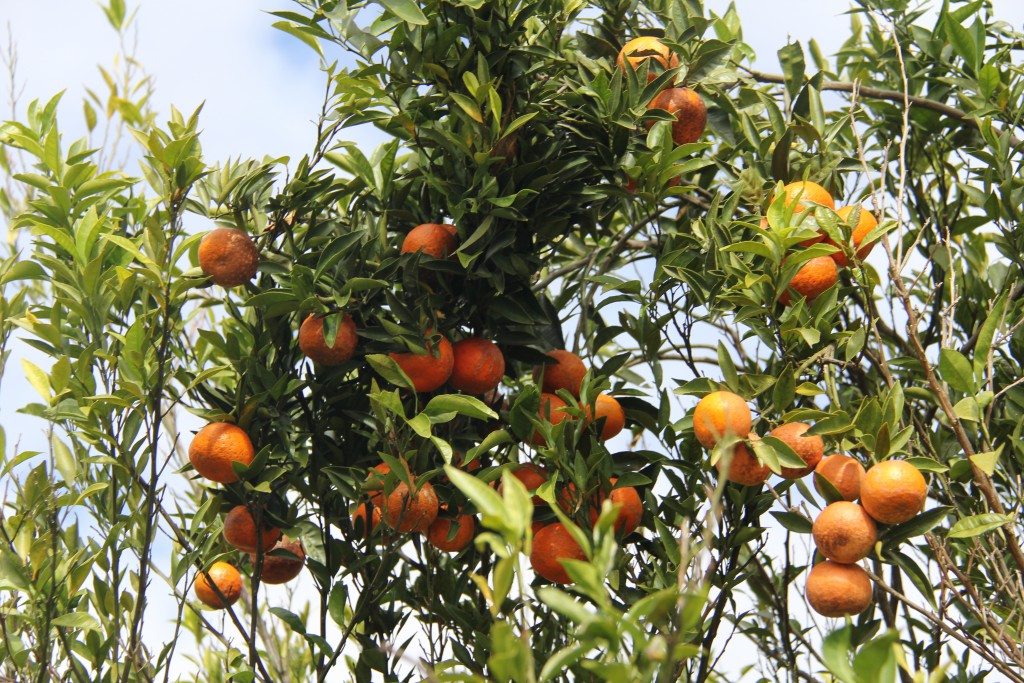Authors: Emran Ali, Tammy Stackhouse, Sumyya Waliullah, Jean Williams-Woodward, Johnathan Oliver
Published in Plant Disease International Journal

Is one of the world’s smallest pathogens harming your citrus plants? Citrus production within the state of Georgia (USA) is rapidly increasing each year. There are citrus plantings in backyards, production, and plant nurseries within at least 32 GA counties. The growth of citrus in Georgia is only expected to increase over time; however, there are some threats to expansion. Citrus has many viroids, a tiny virus-like pathogen, that harm the plants throughout the world, but few have been found on citrus within Georgia. Hop stunt viroid (HSVd) is one of several viroids known to infect citrus. This viroid has been reported within Arizona, California, Florida, Texas, Washington state, and throughout the world. HSVd is typically transferred from plant to plant on contaminated grafting and pruning tools. HSVd can infect many different plants, including hops, grapevines, and citrus. A large host range helps the pathogen spread.
In the United States, HSVd has been found on many different grapefruit, orange, and tangelo varieties. Symptoms include discolored and gumming inner bark, pitting (small holes) in stems, bark splitting (coming apart) and stunted growth. There are typically not leaf or fruit symptoms. Some citrus varieties are resistant to HSVd, but others, including tangerines and their hybrids will show damage. There are also different types of HSVd, called cachexia and non-cachexia variants. “Cachexia” means severe chronic illness, so the cachexia variants are much more dangerous and the noncachexia variants typically do not cause damage.
In May and June of 2020, leaf samples were collected and tested for HSVd. The samples were collected from 12 different citrus plants from two nurseries located in southern Georgia. The cultivars sampled included Citrus reticulata ‘Dekopon’ and ‘Owari’ as well as Citrus unshiu ‘Miho Wase’ and ‘Brown Select’. The sampled trees looked relatively healthy with little or no signs of damage, but were selected for routine screening. Three to five leaves were taken per plant from throughout the leaf canopy. Small pieces of leaves were cut and used for RNA extraction. Reverse transcription-polymerase chain reaction (RT-PCR) and sequencing was used to verify infection with HSVd. Recombinase-polymerase-amplification (RPA) technology was also used to further confirm positive samples as HSVd. Nine samples were negative for HSVd, but the other three were positive. The positive samples were all taken from Citrus reticulata ‘Dekopon’. The sequencing results revealed that the positive samples were non-cachexia HSVd variants.
This is the first time HSVd has been found in Georgia. This and other viroids could pose a threat to the growing citrus industry within Georgia in susceptible varieties. Currently, only noncachexia variants have been found, but nursery stock infected with this viroid should still be destroyed to prevent spread. Georgia nursery producers and citrus growers should take appropriate precautions to prevent the spread of this viroid disease. Ensure that proper sanitization is used on citrus grafting and pruning tools. Further research is needed to determine the distribution of HSVd and its potential to impact commercial citrus production in Georgia.

Moving forward, growers may be advised to have their citrus plants tested for HSVd, particularly if using established plants as stock sources or if the citrus is not doing well. The Plant Molecular Diagnostic Laboratory (MDL), a fee-based lab service of the University of Georgia Department of Plant Pathology, is now providing HSVd testing for citrus growers in Georgia. The clinic can accept leaf samples taken from various citrus varieties. For best results, 10-12 young leaves should be sent. The MDL is also testing for nine other citrus viruses or viroids and several citrus bacteria, including those that cause citrus greening and citrus canker disease. More information about tests currently available, pricing, submission forms, and submission information are available at the MDL web page at https://site.caes.uga.edu/alimdl/
Samples can be shipped to the following address:
Plant Molecular Diagnostic Lab
Department of Plant Pathology
Tifton, CAES Campus
Plant Science Building
115 Coastal Way
Tifton, GA 31794
Contact information for questions, etc. for Dr. Ali are as follows:
229-386-7230
229-386-7285
emran.ali@uga.edu
alimdl@uga.edu
Again, we would highly encourage you to take advantage of this service. If you have questions or need help, please contact your local county Extension agent for additional information. It would be good to communicate with the MDL lab so that they can expect the samples on the day of arrival.
To keep in the loop for MDL happenings you can follow the lab on Facebook at: https://www.facebook.com/ugamdl